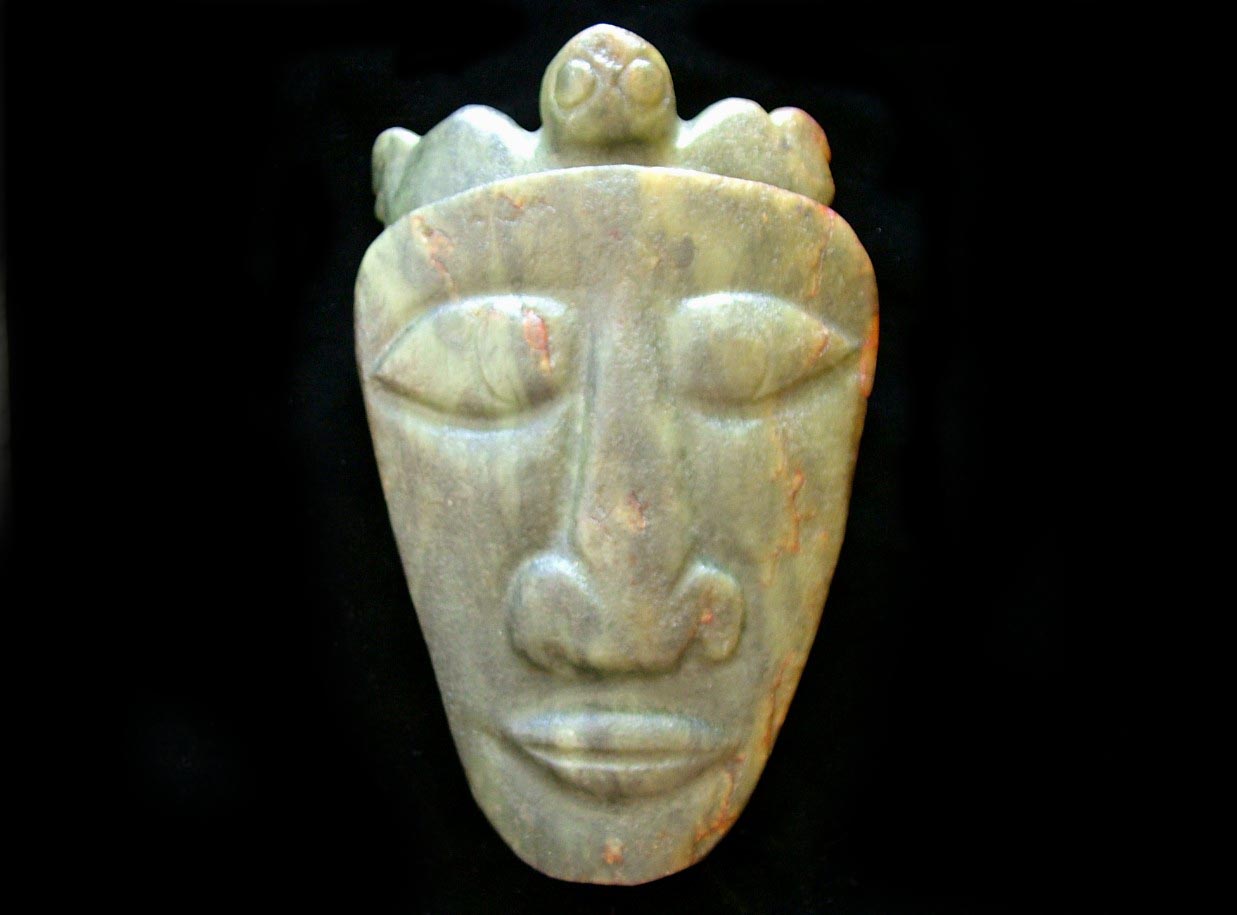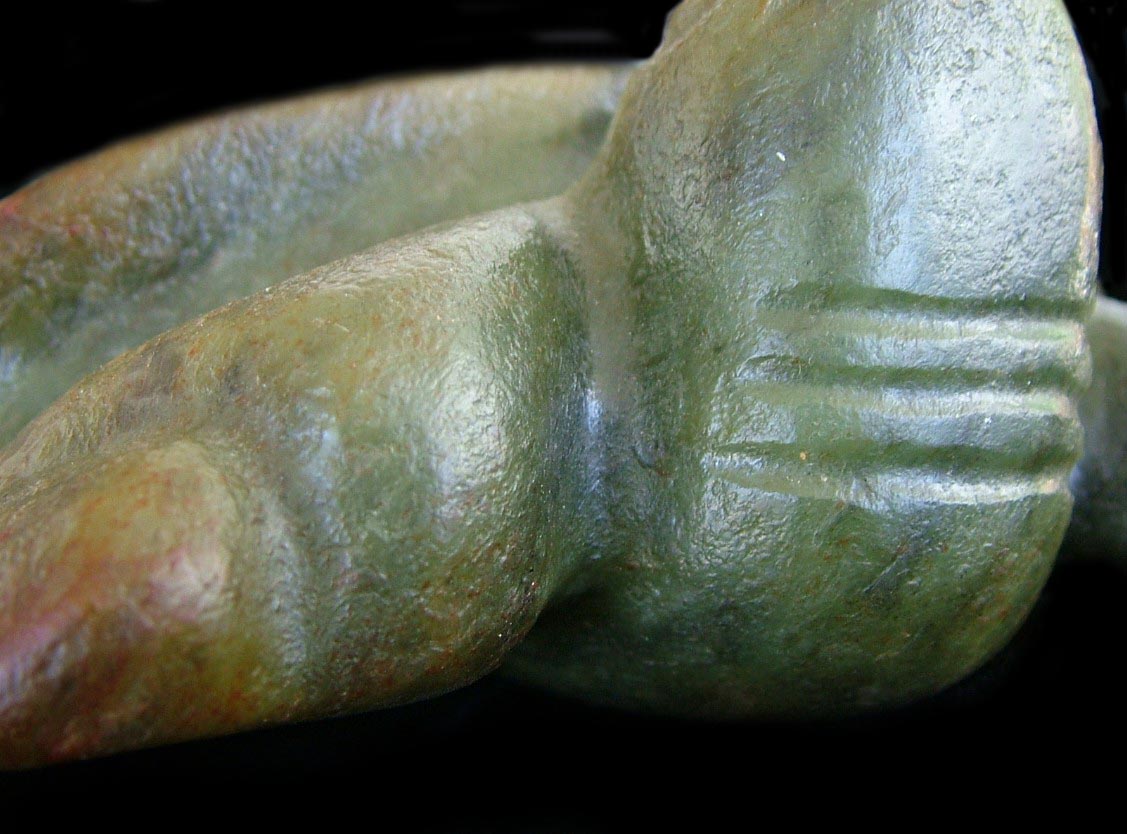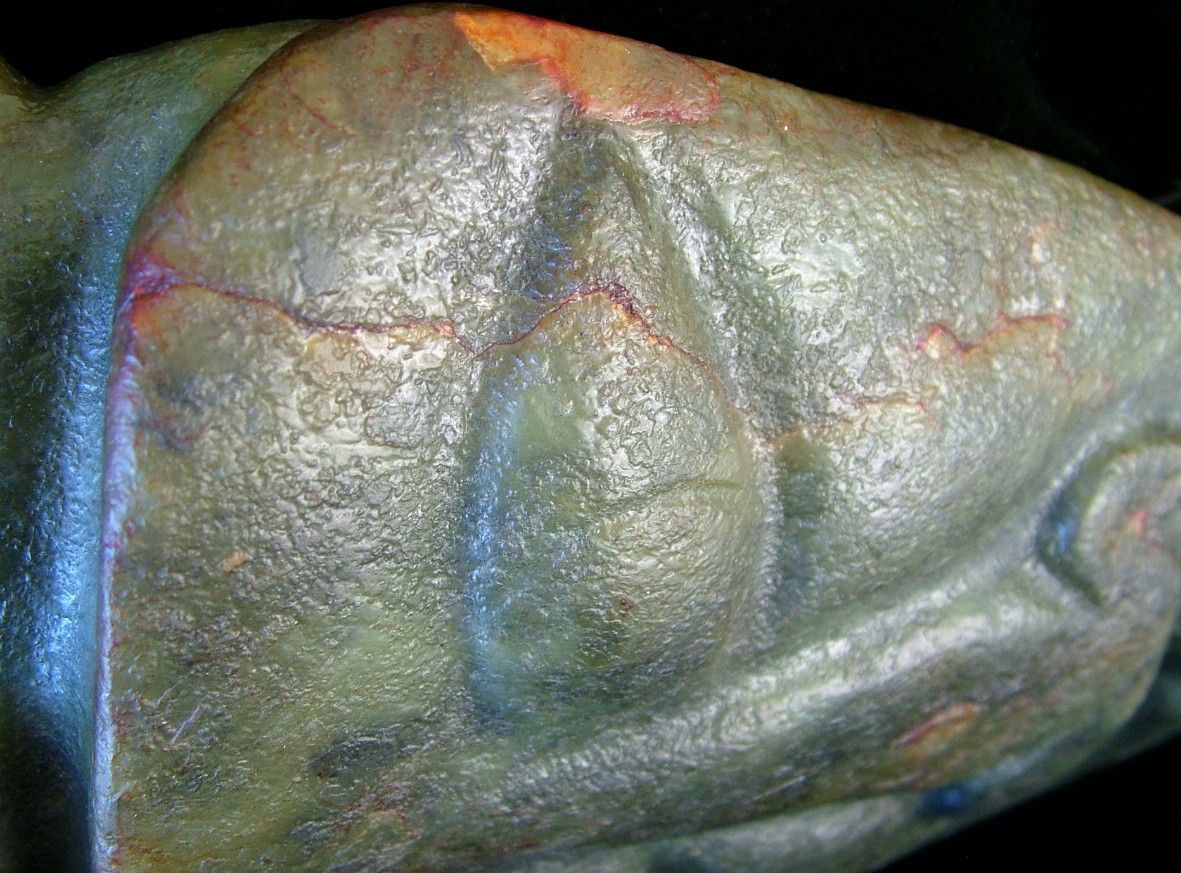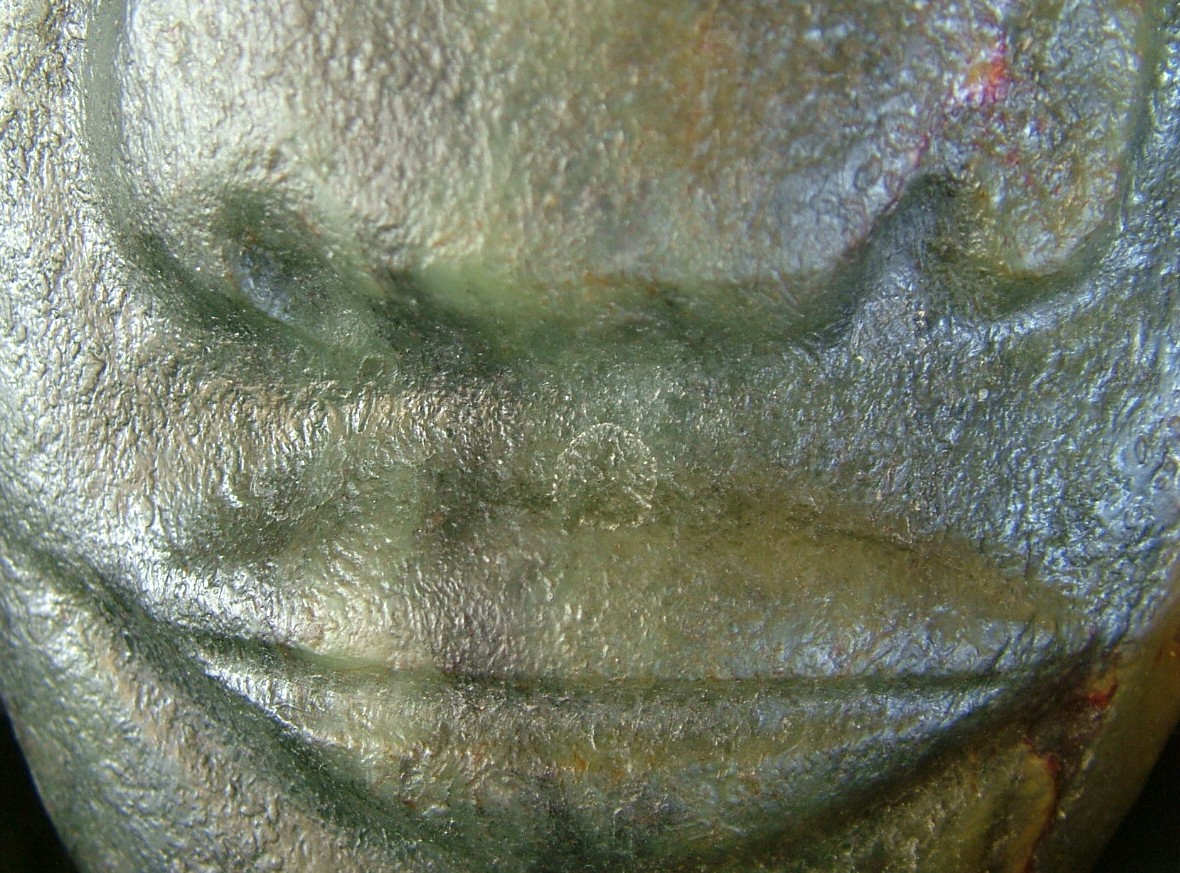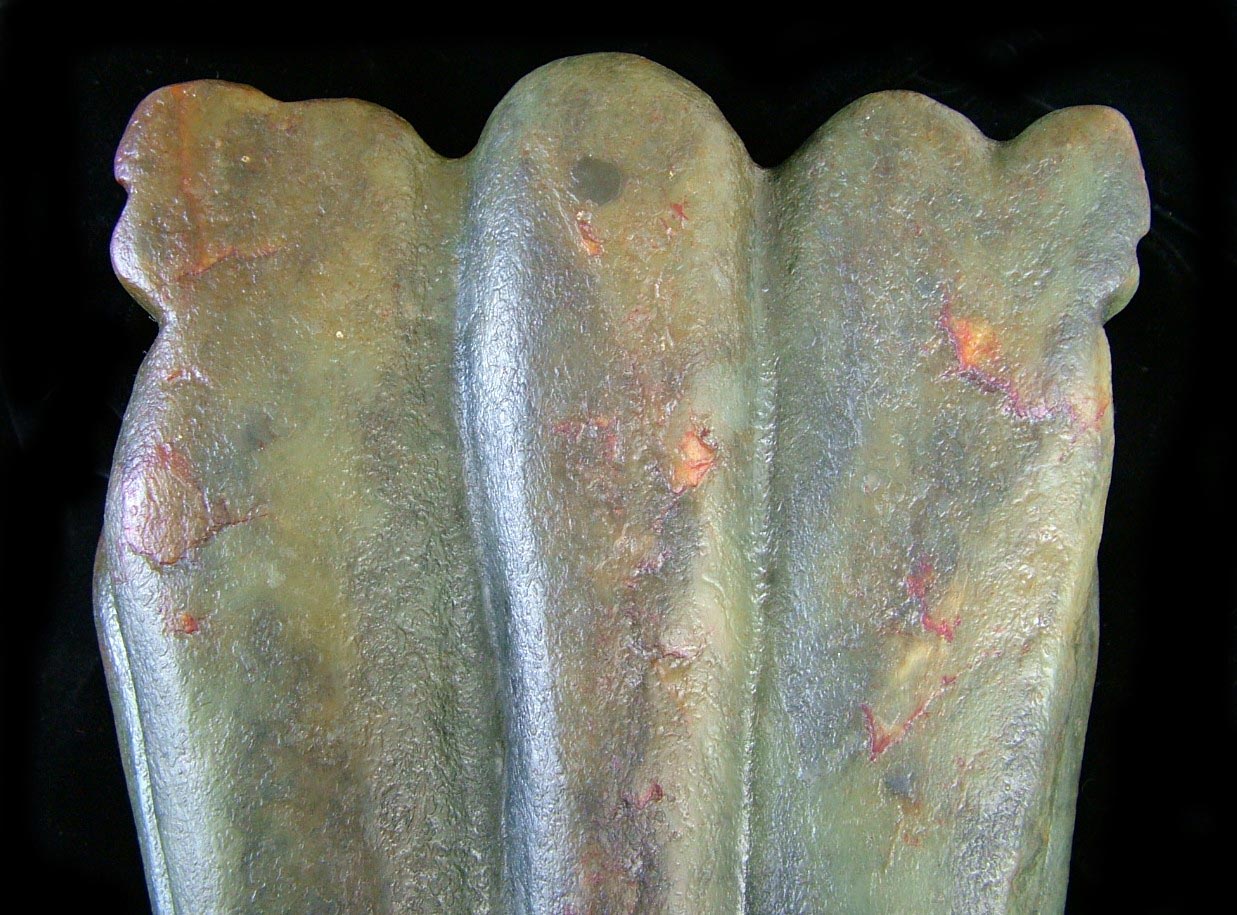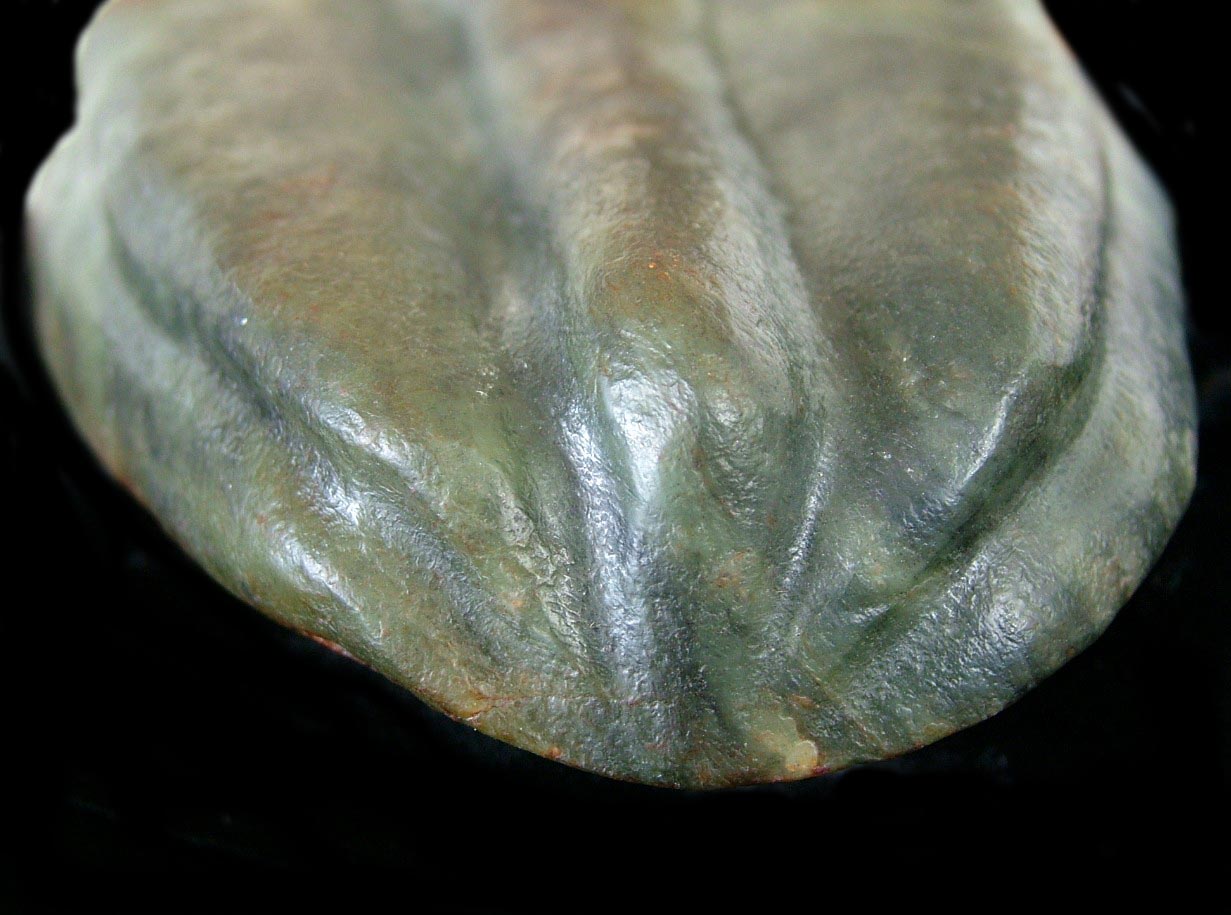 |
|---|
Eye of a Tiger |
|||||||||
| Picture Group 1 |
|||||||||
|
THIS ARTIFACT IS PART OF AN ONGOING RESEARCH PROJECT. THREE OF THE ANCIENT CHINESE ARTIFACTS POSTED HERE WERE REWORKED DURING THE HAN DYNASTY.
Preliminary findings suggest that the added art had been made by a member of a tribal confederation that had either invaded ancient Northern China or had been hired on as mercenaries by a host leader. They may have possibly been a mixture of the Yuezhi (known in Bactria as the Kushans) or the later Hephthalites (also known as the Sveta Huna (White Huns)) and an unknown Mongolian tribe or tribes. A connection to the earlier Xiongnu tribal confederation is also being considered. Right away I would like to mention that this artifact is posted on the kingarthurbanner.com website with the artifact group listed as "Neolithic Chinese Bear Dragons Are Here", the info. with that will soon be updated. This jade artifact is from the Hongshan culture (C. 4700 BC to 2900 BC). At some time during the latter part of the Han Dynasty (206 BC to 220 AD) the artifact was; treated with a lead wash, then in certain areas resins were applied (the right eye has a small area with amber inserted), it was then painted in certain areas, and then finely it was sealed with a extra thick coating of what appears to be Isinglass (Sturgeon glue). Much of the painted areas are along age cracks, this shows that the paint was applied much later then when the piece had originally been carved. The entire coating has light engravings that are very distinct, but they are also difficult to photograph. It is 22 Cm in the length. Some of the iconography and a few Roman (Latin) inscriptions (they do appear to be Greek) show a connection to the Alanic Sarmatians (named on this piece as the Asi), or a group of Central Asians and Mongolians that formed one of the Hunnic confederations (that are known under various names). In Jan. of 2006 I speculated that this Neolithic statue may have been connected to the ancient Chinese sword and martial arts god known as Xuan Wu Dadi (the Dark Lord of the North), although this god is only known from the Warring States Period (5th C. to 221 BC) onward he is thought to be very ancient. After reviewing the miniature art done on this in the Late Han Period, then I think that it is apparent that approx. 2,000 years ago. "someone" else also thought that this was this was of the Xuan Wu Dadi. The artifact shows a combination of a tortoise, human face, and shield with a snake battle mace, the face's nose is also as a fleur de lys. Interestingly the artifact was made to be placed standing against a flat surface (with the face upside down). It was also made as a sitting foot rest, but only for the right foot at a slight angle and on the left side, this must have had something to do with a ritual. Although I have seen earlier anthropomorphic images of Xuan Wu Dadi, it is generally thought that he only takes on human form during the Early Song Dynasty (960 to 1279 AD. Later images usually show the god holding a sword in his right hand while seated on a throne, his right foot is on a snake while his left foot is on a turtle - He is in fact considered to be a sword god. |
|||||||||
Picture Group 2
|
|||||||||
| Although faint Pictures 1 thru 5 show that in between the snake battle mace / tortoise head and the flipper there is a female figure, Picture 2 shows a distinct spear head. Pictures 6 thru 8 show that on the other side of the snake battle mace / tortoise head there is an upright long sword in front of a long haired boy or girl, in front of this figure there may be a Roman (Latin) Letter "T". Pictures 9 thru 12 shows Greco Roman human figures, these also make for Roman bind letters, they may read V X D, or X V, or E V X, or E X V, or C V X, or C X V, there may also be a letter "D". This may have something to do with Roman Legionary or Roman Cavalry Auxiliary unit. Pictures 13 and 14 shows figures that are difficult to distingush. Pictures 15 and 16 shows Greco Roman human figures in front of large face that is behind three vertical bars, the center figure is armored and distinctly different, there is a long stick with a skin banner pointed in the direction of the large face. There is every indicator that the large face represents a group of prisoners and that the figures in front are either; placing, challenging, or releasing the prisoners. This may be part of a legend or a myth to do with a releasing force. With that said it could be speculated that it had been associated with Alanic Sarmatians (or another Central Asian group) offering to release Legionaries from their Parthian captors. |
|||||||||
Picture Group 3
|
|||||||||
| With Pictures 1 thru 6 there is a figure on the top of the right eye that is holding a rope attached to a head on the eye, the head is wearing a Phrygian (Scythic) cap. The figure has red spiked hair that also appears as a cock's head. This could be perceived as being somewhat suggestive of a Gaul, in fact it may be a Gaul. The stripes on the left arm hints of a tiger. Pictures 7 thru 17 shows a crowing cock with other smaller figures. There are two small pinkish heads that appear as if connected. Pictures 19 thru 25 show a raised rounded light gray figure on top of the left eye. This is made of a painted dull silversh metal, it may be made of lead zinc alloy. The area around this has engravings on the coating (thought to be Isinglass). Pictures 26 and 27 shows a small head in a pointed cap on the nose. Pictures 28 thru 31 shows this upside down it now appears as a hind's head with a woman in it, next to this is a stag. This may be symbolic of the sexual attraction of the a hind / stag, this is a theme of the magnetic and the water compass. Pictures 32 thru 36 show on the right eye an amber (although there may be minute amounts of other resins) insert that is pale yellow, light orange, and white, it is a face with small figures, there is a small paw in the front and behind there is a striped tail. This should be a tiger man in a cap with a tiger tail, he is a blonde Caucasian, he may be an Alanic Sarmatian. The tiger being associated with warriors has a great significance in Chinese folklore and tradition, the Five Tiger Generals of the Kingdom of Shu of the Three Kingdoms Period (184 AD to 280 AD) are the most famed example. Concerning the tiger's connection with amber in folklore, the 16th C. AD Physician Li Shih Chen wrote that when a tiger dies it's spirit goes to the earth and is transformed into amber. As I have some evidence that the Sarmatians may have originated from the shores of the Eastern Baltic Sea (famed for it's amber), then this may have been from a Sarmatian tradition. It should be mentioned that in the Shahnameh the Persian hero Rustam wore a magical tiger skin coat (possibly a cuirass) and a leopard skin hat. The first legendary Persian King Keyumars was from a tribe that wore leopard skins, but then a Medieval painting shows Keyumars in a leopard skin standing on a tiger skin, in my opinion this hints that a people of a tiger totem were the original indigenous peoples of ancient Iran, and that they were conquered by a people of a leopard totem. The combination creature the Manticore was of Persian origin, its name was "man-eater", it is thought by some to have originated from the somewhat human-like facial appearances of the Caspian tiger. The Greek root word tigris for tiger is thought to have originated from a Persian word for an arrow that means speed. Even more significant to this artifact, in the Zand-i Vohuman Yasht it is mentioned that during a legendary Iranian battle, that an Army of mounted warriors from the East appeared, they bore a tiger skin banner and a white wind sock. It is very likely that this Army came from a region in ancient China, they may or may not have had a more ancient connection to a more western people of a tiger totem |
|||||||||
Picture Group 4
|
|||||||||
| Pictures 1 thru 12 show the following: The left eye is a tree, a arrowhead, and an erupting volcano. There is a wavy line that is going through this, Picture 3 shows what may be a reindeer in front of this line, it may represent a volcanic electric discharge. Picture 8 shows that the orange plume is also a horse's head. Picture 12 shows that the back and the front of the horse's head may also be human figures. Pictures 8 thru 11 show two Caucasian heads that are connected on the wavy line, these should have to do with metal smiths (perhaps something like the Greek Cabeiri, the sons of Hephaestus), or the widespread ancient belief in a set of divine twins. Picture 13 shows that the nose is also a bird. Pictures 14 thru 17 shows that the two Caucasian heads on the wavy line ore now two or three different heads, the head in front is distinctly Mongolian. Pictures 18 thru 22 shows that the reindeer is now a type of bowl with flames and foam, it has at least two figures inside of it. Pictures 23 thru 26 show the horse's head is now a Janus type horse and reptile or bird's head. Picture's 27 thru 29 show that the horse's head is now somewhat like a human face. Pictures 30 thru 33 shows that the horse's head is now a woman wearing a head veil, she is holding a cup with a face that has flames on top; her lower face can also appear as a child's face. The woman should be a fire or solar goddess, or both of these. Pictures 34 thru 37 shows that the resin area of the right eye has what appears to be a fish, it may be a sturgeon. With Pictures 34 and 35 there is a large fish with a yellow pearl in it's mouth. Pictures 36 and 37 also show a fishing scene in and around the fish, there is also a hint of a pointed slipper. |
|||||||||
Picture Group 5
|
|||||||||
| Information. |
|||||||||
|
| |
Picture Group 6 |
Information.
|
| |
Picture Group 7 |
Information. | ||

